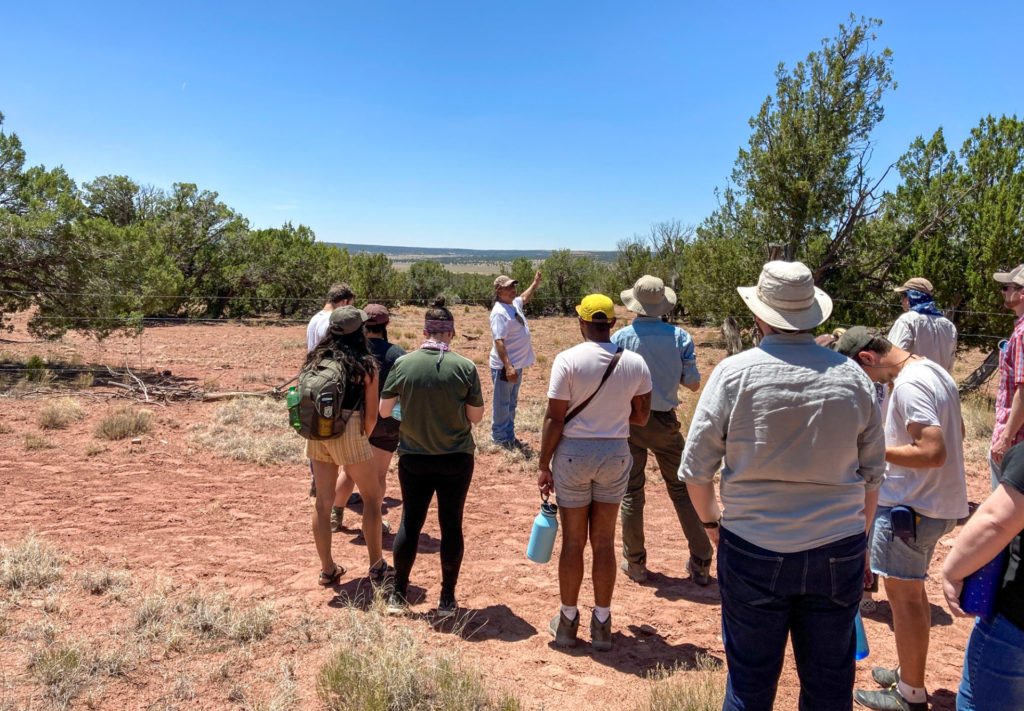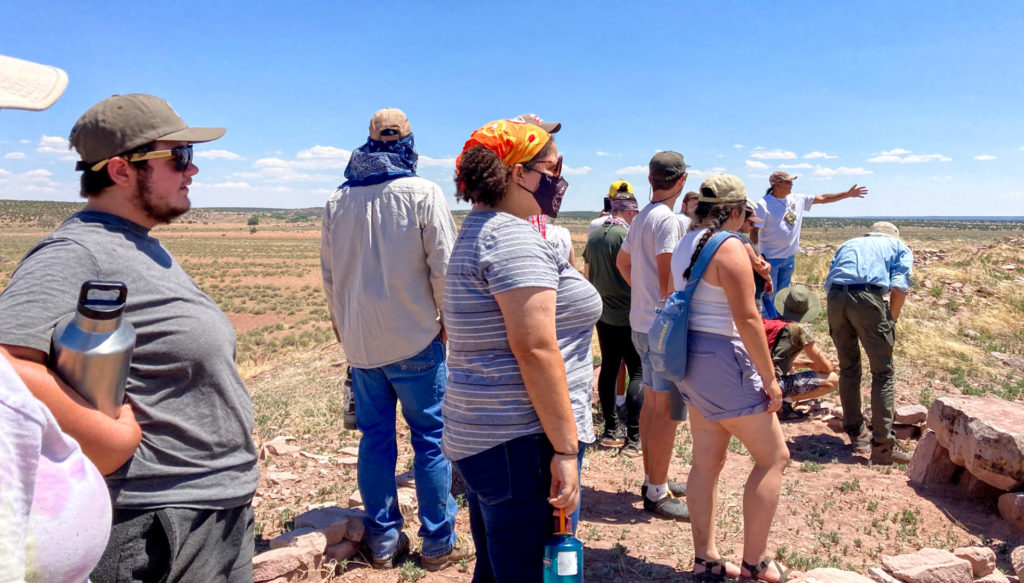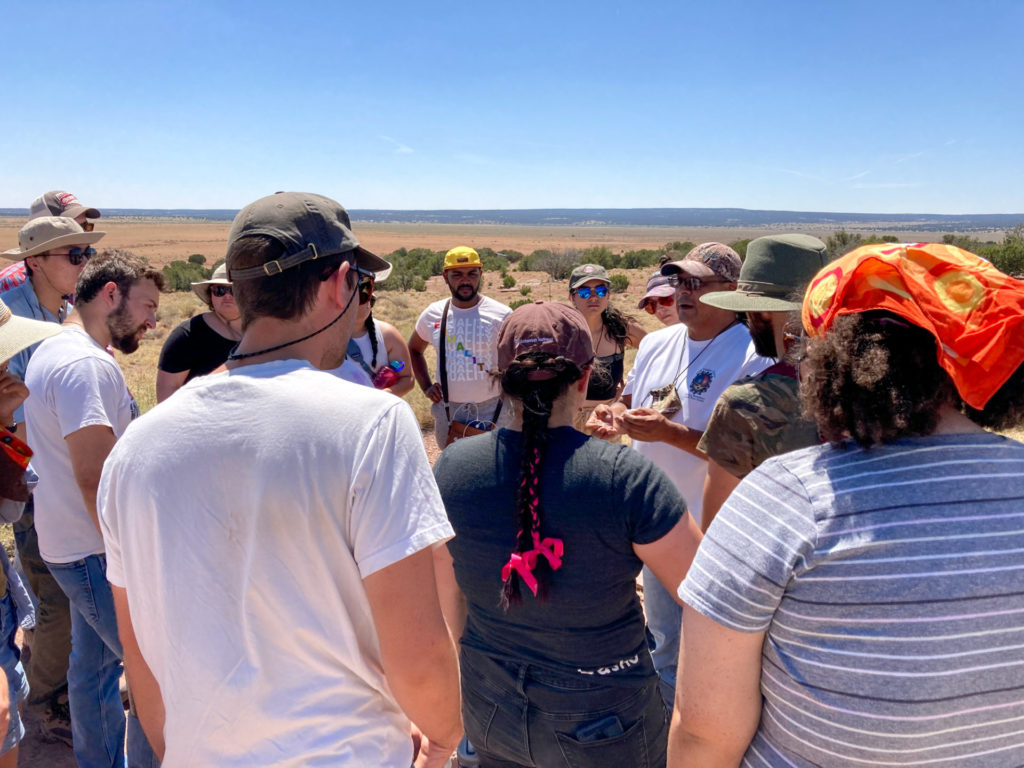- Home
- >
- Preservation Archaeology Blog
- >
- How Time and Place Is Woven at Zuni

(July 15, 2021)—We started our time at Zuni by visiting the local trading posts where I and several of my fellow field school students were captivated by the fetishes. The fetishes are stone animals that protect the owner’s mind and body from harm. The fetishes need to be fed turquoise and kept in the bottom of a clay pot while nurturing them through time.
We then proceeded to the Zuni Visitor & Arts Center, where our group was introduced to Kenny Bowekaty, Zuni Archaeologist and Tour Guide at the Village. Kenny described the Zuni creation story, which is layered with how scientists described the beginning of the universe and how the earth developed over 4.5 billion years. I vividly remember his description of proto-humans, which moved like salamanders and had clammy skin with webbed hands and feet.

During Kenny’s oration, we learned about the first contact between Zuni and Francisco Vazquez de Coronado at Hawikku while the latter searched for the cities of Cibola (Seven Golden Cities). Kenny also gave us an orientation to the middle place through the telling of the Zuni Migration Story, a detailed account of how the people traveled through the four worlds into the light, emerging from along the Colorado River, where the A:shiwi began searching for the middle place.

Afterward, we journeyed to Hawikku to continue our learning experience. Hawikku Village sits atop a small bluff in the middle of an alluvial plain. Frank Roberts excavated the site from 1917 to 1923. Kenny described his life as a child, herding his family’s sheep and playing in and around the excavated pueblo. His ancestors, the A:shiwi of Hawikku, are in direct alignment with his childhood home, and this is why he continues to advocate for his people and their history.
I found our time at Hawikku and with Kenny very meaningful. The layers of past, present, and future are remarkable, creating an extraordinary vision of continuity. For anyone wishing to learn more about the culture and history of the Zuni, I recommended contacting the Zuni Visitor & Arts Center.
